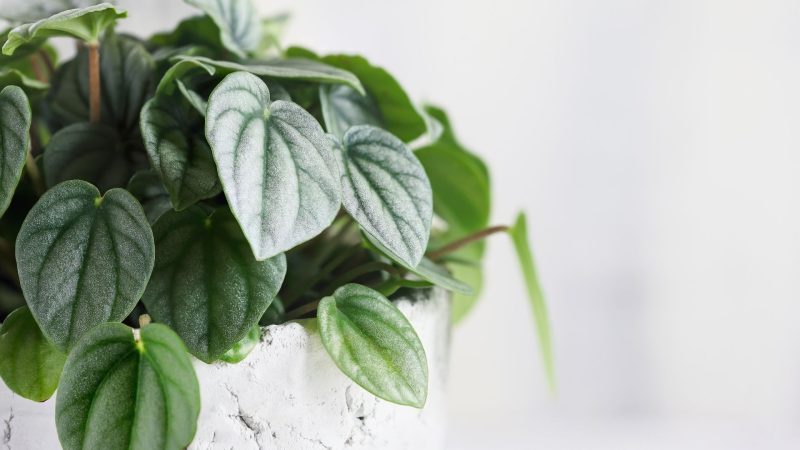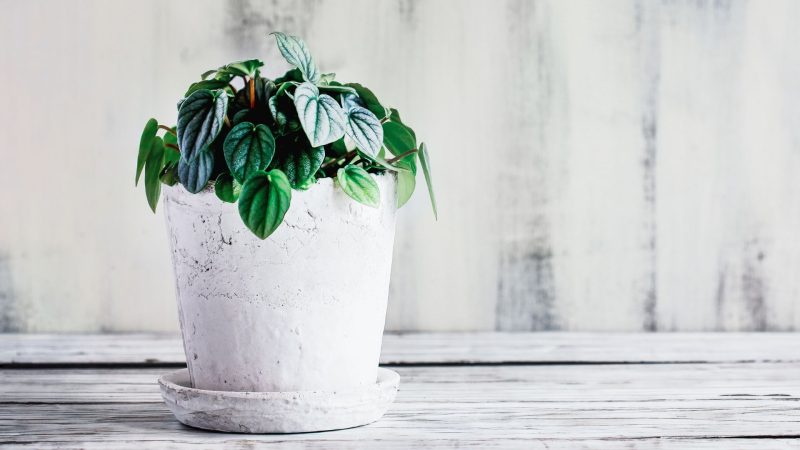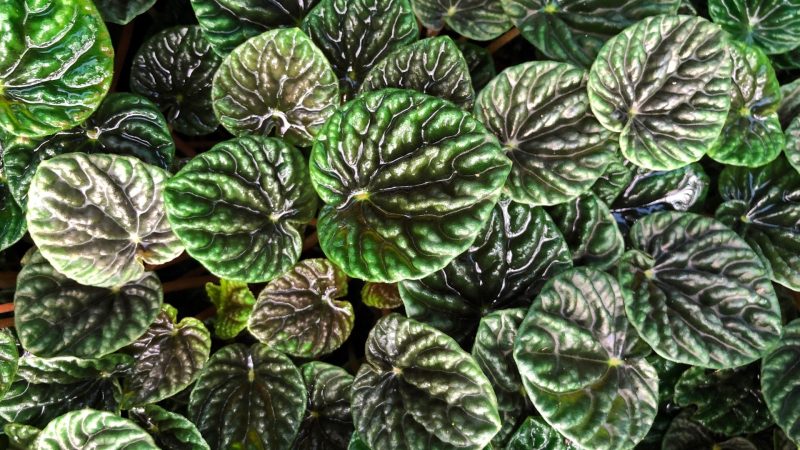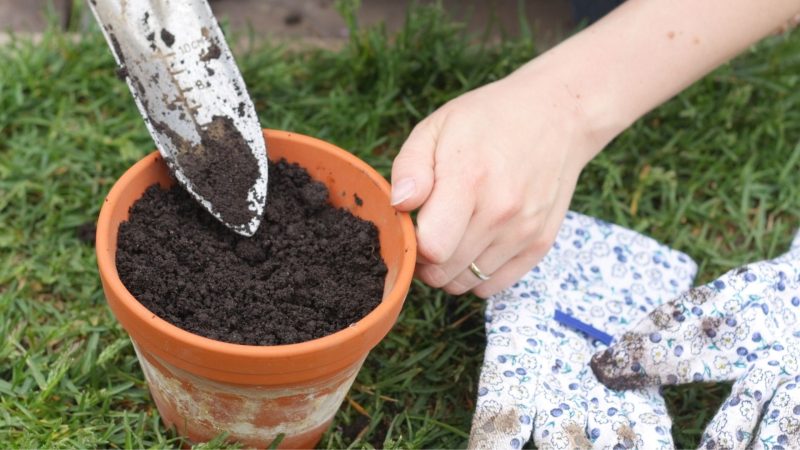Peperomia Frost is a beautiful plant that’s believed to bring good luck into a home. It also helps purify the air that you breathe by getting rid of formaldehyde—a toxin that can be found in the air you breathe in. This plant has delicate roots and tends to break while repotting, so you need to be extra careful with this while transferring it to another pot.
How do you care for the dainty Peperomia Frost? To take good care of the Peperomia Frost, you need to use suitable soil, light, temperature, watering, and fertilizer. The ideal soil for this perennial plant is 50% non-organic and 50% organic mix—for example, 50% peat and 50% perlite.
Furthermore, ensure the soil is porous, gritty, and well-draining by adding organic matter, such as manure or compost. In this article, you’ll get to know the comprehensive guide of how to take good care of your Peperomia Frost plants and let them grow healthily.
What Does Peperomia Frost Look Like?

The Peperomia Frost is a beautiful plant from the Peperomia genus. It has ripple-type leaves with dark green veins and frost covering—similar to Watermelon Peperomia.
Furthermore, it’s a herbaceous plant with plump stalks and can grow up to six inches to one foot in height.
Is Peperomia Frost Rare?
The Peperomia Frost is a lovely house plant possessing rare rubbery and thick, silver-green leaves. This plant is exotic and attractive with its frost-like covered silver leaves, making it a great plant addition.
Is Peperomia Frost Considered Toxic or Poisonous?

The peperomia frost plants aren’t toxic to both humans and animals. However, they’re not also considered edible.
How Often to Water Peperomia Frost?
You need to water your Peperomia Frost every seven to ten days. However, before watering the plant, ensure the soil is at least 50% to 70% dry.
To do that, insert your forefinger at least two inches into the soil and feel if it’s dry. After removing your finger, if you see some soil sticking into it, it means that the soil is moist and doesn’t need to be watered.
Nonetheless, if your hand comes out clean, that means it’s time to water your Peperomia Frost right away. Make sure to let the water flow through the drainage holes and not let it sit to avoid rotting its roots.
You can also water it only when the leaves start to look somewhat droopy.
Are Peperomia Frost Easy to Care For?
Peperomia Frost plants are very easy to care for as you don’t have to water them frequently. On top of that, they only require a small place with partial sunlight to thrive.
Peperomia Frost Care | A Detailed Guide

For exemplary Peperomia Frost care, provide it with a well-draining soil using compost, peat, mulch or bark, humus, and perlite or pumice. The temperatures ideally should range from 65°F to 75°F or equivalent to 18°C to 24°C.
The humidity should also be around 40% to 50%, though it can take more. Peperomia Frost also requires indirect light, making it ideal as window sill plants.
For the detailed guide on Peperomia Frost care, kindly proceed reading below:
Soil
The Peperomia Frost native habitat is soilless substrates in the rotting bark, cracks of trees, or rock crevices. Thus, you need to supply it with a 50% non-organic and another 50% organic mix.
The standard mix is 50% peat and 50% perlite. Nonetheless, you can get creative by mixing sand, coco-chips, and pumice to make the soil porous, loose, and well-draining.
If you don’t have peat, you can use sterile garden compost, mulch, and organic manure. The organic matter helps to improve the retentiveness of peat while keeping the roots warm and humid.
Light
The Peperomia Frost is best placed in a partial shade or filtered light to have the much-needed chlorophyll for photosynthesis. This plant isn’t ideal to be put in the direct sun rays as it can wilt and get burned.
Thus, if you’re planning to grow the Peperomia Frost outside, make sure to plant it under a much bigger plant or nestled amid other plants. Moreover, observe your plant closely for signs, such as pale leaves—indicating that it’s placed in too low light.
On the other hand, the abrupt leaves droop means that it’s placed under direct sun and needs to be moved to an area with filtered light.
Watering
The bigger concern there is about the Peperomia Frost care is overwatering. Nonetheless, this doesn’t mean that you’ll let the substrate go overly dry.
This only means that the soil needs to be moist, not water-logged. Ideally, the soil needs to dry out for at least 50% and give a dose of deep watering.
Make sure to let the water flow through the water drainage holes and not let any water sit to prevent root rot. During the winter months, water the plants only when it starts to look droopy.
Temperature
The ideal temperature range for Peperomia Frost is between 65°F to 75°F or equivalent to 18°C to 24°C. When the temperature goes down to 55ºF or 13ºC, this plump plant dies, even at the slightest frost sign.
In the same manner, it can’t also take extremely high temperatures as its fleshy stems will dry out, driving it to its end. Thus, make sure to put the Peperomia Frost at its ideal temperature to help it thrive and not lose its vibrance.
Fertilizer
In general, Peperomias can survive without fertilizer. However, if you want fuller and faster growth, feeding it once a month is beneficial.
You can use an all-purpose houseplant fertilizer to aid in the healthier growth of your peperomias by applying this once a month during the spring and summer months.
Potting
Another essential Peperomia Frost care is choosing its suitable pot. This plant has small root systems comparable to epiphytic succulents.
It’s also best to note that this plant type doesn’t need many substrates and its root is best bound in small pot size terracotta planters. The walls of the terracotta planters are porous, allowing the water and air to move efficiently, making them ideal pots for plants like the Peperomia Frost.
How to Fertilize Peperomia Frost?
It’s ideal to fertilize the Peperomia Frost during the growing season, which falls in mid to late spring and summer. Do this once a month with an all-purpose houseplant fertilizer for fuller and faster growth.
How to Propagate Peperomia Frost?
There are two best ways to propagate Peperomia Frost—first is by rooting stem, and second is through leaf cuttings.
For a thorough guide about these two distinct propagation ways, kindly refer to the guide below:
Stem Cuttings Peperomia Frost Propagation
When the propagation by leaf cuttings doesn’t work for you, stem cutting is the best way. This is a straightforward method and is used by most home growers.
To do this:
Step 1: Use a moderately mature mother plant that has been flowering steadily.
Step 2: Examine the basal branches’ base and pick a limb that’s thick and healthy.
Step 3: Cut around three inches of stem tip with several leaves and put aside to callous for 24 hours.
Step 4: Stick the stem in water or moist the soil evenly with 50/50 peat and perlite.
Step 5: After that, place the plant in a partial shade and ensure the water remains at room temperature.
The stem will take root in about four to eight weeks.
Leaf Cuttings Peperomia Frost Propagation
To do this:
Step 1: Look for healthy leaves and cut them, along with the petiole from the mother plant.
Step 2: Allow the cuts to harden for 24 hours.
Step 3: The next day, cut the leaves at least four inches apart using a germination tray. Make sure that it has a 50/50 peat and perlite soil mixture.
Step 4: Ensure that the stalk is placed firmly under the soil. Then, press down the leaf a bit in the soil.
Step 5: Once done, put the tray in 70°F to 75°F or equal to 21°C to 24°C.
Step 6: Make sure to maintain the soil moisture, but shouldn’t be wet to avoid rotting the leaves.
Step 7: New plants will then emerge from the base of the leaf in approximately four to eight weeks.
Here is a video on how to propagate peperomia from a leaf:
How to Repot Peperomia Frost?

When you repot a Peperomia Frost, pick a pot that only fits its root ball. This is because this type of plant thrives when it’s slightly potbound, so the use of small-sized terracotta planters is ideal.
Do the repotting during spring every three years to refresh the soil. To do this:
Step 1: Mix two potting soils at a 1:1 ratio with several handfuls of charcoal and orchid bark into a pail and mix well.
Step 2: Then, add worm compost as a topdressing. The Peperomia Frost likes light but a rich mix of soil that’s well-drained. For this, you can try out coco coir. This keeps water while providing ideal drainage and aeration.
Moreover, you can also use 1/3 coco air, 1/3 potting soil, and 1/3 pumice or perlite instead of the given mix above.
Common Problems With Peperomia Frost
Although the Peperomia Frost plant is easy to take care of, it can encounter common problems, such as pest issues, sudden dropping and fading of leaves, and brown spots of leaves.
To handle the given problems above, see the corresponding treatment below:
Pest Issues
- Regularly check the undersides of the leaves since that’s where the bugs begin to strike. If you find a single bug, pinch it right away from the leaves.
- Keep your leaves in a place where there’s good air circulation to ensure the leaves’ surface is dry. This prevents moist-loving insects from staying on your plants.
- It’s also best to use organic insecticide, such as neem oil, to deter bugs from eating the leaves of your Peperomia Frost.
Sudden Dropping and Fading of Leaves
There are a few reasons why the leaves of your Peperomia Frost leaves start to drop and fade. This usually happens when this plant is exposed to cold.
Thus, make sure to bring the plant indoors to avoid worsening its condition. Then, examine the plant for root rot shown in the plant’s base as soggy and displaced from its roots.
If it’s a mature plant with several limbs, rescue the healthy stems and repot them with a sterile airy mix.
Brown Spots on Leaves
If the leaves of your Peperomia Frost plants have brown spots spreading, it’s caused by a fungal infection occurring due to unnecessary wetness on the leaves.
Remove the affected leaves and keep the Peperomia Frost plants in a well-ventilated area.
Frequently Asked Questions
To know more about Peperomia Frost, here are some of the frequently asked questions about them:
Can Peperomia Frost Survive Cold?

Peperomia Frost prefers temperatures between 60°F to 80°F and couldn’t stand temperatures that are below 50°F. So, it’s essential to keep it away from drafty areas of your home during winter.
Do Peperomia Frost Like to Be Misted?
Like most tropical plants, the Peperomia Frost can benefit from misting it often as it can boost humidity. It’s a great way to avoid overwatering your plants that can lead to its end.
Does Peperomia Frost Plant Purify Air?
According to NASA research, all the foliage of Peperomia Frost purifies the air. Furthermore, Wolverton’s Clean Air supplementary study shows that Peperomia reduces the formaldehyde‘s level indoors by 47%.
Formaldehyde is a colorless toxic gas integrated by methanol oxidation that’s used as a disinfectant, antiseptic and more. Thus, having some Peperomia Frost indoors can help a lot as a significant amount of this substance is present in the indoor air.
How Do You Know if Peperomia Frost Needs Water?
When the Peperomia starts to look droopy, it’s an indication that it needs to be watered. During warm weather, it’s best to mist it daily for additional humidity that these plants love.
Do Peperomia Frost Like Coffee Grounds?
Coffee grounds are great for Peperomia Frost as it’s exceptionally rich in nutrient source for plants. The best way to use this is by making compost or liquid fertilizer from it and applying it every month to enhance the traditional fertilizer.
Should I Prune Peperomia Frost?
The Peperomia Frost plant doesn’t need any pruning since it’s an evergreen perennial, possessing a mound-forming growth habit. It’ll only require a routine in removing dying leaves.
Summary
Peperomia Frost plants are rare and easy to care for evergreen perennial. Aside from its attractiveness, it can also aid in purifying your indoor air from a harmful substance like formaldehyde.
So, if you’re still planning to purchase a Peperomia Frost, it’s best to get it now to add beauty to your surroundings as well as clear your air from harmful substances.
Related: Calathea Dottie (Rose Painted Calathea Dottie) | Plant Care Guide